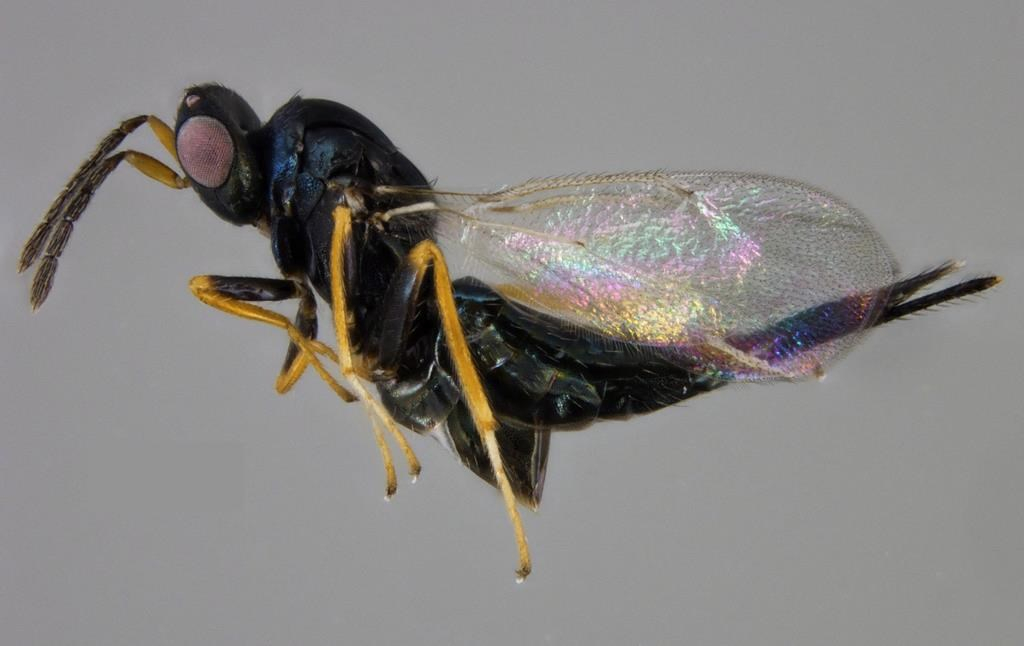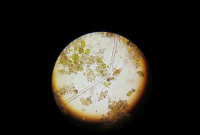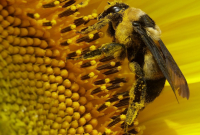Support strong Canadian climate journalism for 2025
A group of Canadian researchers say they have, for the first time, successfully raised wasps that will be used this summer as a weapon against an insect that is ravaging forests.
Natural Resources Canada decided to rear their own wasps, named Tetrastichus planipennisi, in order to increase their number in an escalating battle with the destructive emerald ash borer beetle that has killed millions of ash trees in Canada and the U.S.
Since 2013, the federal organization had been importing the wasps from their counterparts at the United States Forest Service in Brighton, Mich., and releasing them in 12 areas in Ontario and Quebec, said Krista Ryall, the lead researcher on the project.
"We're hoping to raise about 10,000 for this summer," Ryall said. "That will be enough to do five or six more sites across Ontario and Quebec."
The wasps are part of a "bio-control" program out of a laboratory in Sault Ste. Marie, Ont. — and the only "large scale attempt to manage the emerald ash borer," Ryall said.
It is a targeted approach, she said.
The female wasp will seek out trees infested with larvae of the emerald ash borer and lay 50 to 60 eggs on the larvae itself. The wasp's larvae then feasts on the emerald ash borer larvae
"The wasps will eat and kill the larvae and then you get more wasps coming out instead of the emerald ash borer," Ryall said. "Over time the wasp population builds up and we hope that they will help kill a fair number of emerald ash borer out there."
The wasps then fly out, breed, lay more eggs and die within a month of taking flight. The cycle repeats a few times during the summer, Ryall said.
The wasps, which are native to China, have no effect on humans or other organisms, according to American research, she said.
The emerald ash borer, a beetle native to Asia, was first detected in Canada in Windsor in 2002 and by 2007 it had spread to Toronto, according to Natural Resources Canada research.
"The spread is a major concern," Ryall said. "We're finding that 99 per cent of ash trees are killed within five-to-seven years of emerald ash borer getting into an area and causing extensive mortality."
The beetle has continued its slow spread east and north and entered western Quebec in 2008 and reached Montreal by 2011.
It was also detected in Thunder Bay, Ont., last summer, Ryall said,
About 60,000 wasps targeting the emerald ash borer have been released so far, Ryall said, noting that the successful Canadian breeding program means Natural Resources will be able to ramp up the numbers needed to try to save ash trees.






Comments
It is absolute lunacy to release another non-native species into the environment. It is impossible to replicate the real forest ecosystem in a lab or predict what will happen once these gain a foothold in the wild. Best case is they eat all the Emerald Ash Borers and die off, but species have been adapting since the primordial ooze. They will find other food when the borers become scarce, if not before, and could become a far bigger problem than the borers. This has gone wrong so many times whether intentionally done or not - cane toads in Australia, pythons in the Everglades, rats in NZ, green crabs, goldfish, black and grey squirrels, just to name a few. The Precautionary Principle is the most important factor in these decisions and it is being ignored at every turn. Penned Atlantic Salmon were also supposed to be benign, but lice, pathogens and filth have dispersed throughout waters and wild salmon have been infected - to what extent or effect, is unknown. So many questions, no answers, yet still the farms are allowed to operate, even when indigenous in unceded territory have demanded their removal. It makes me wonder if lumber companies played a role in this wasp's release - by lobbying, or the many other avenues they have that citizens don't.